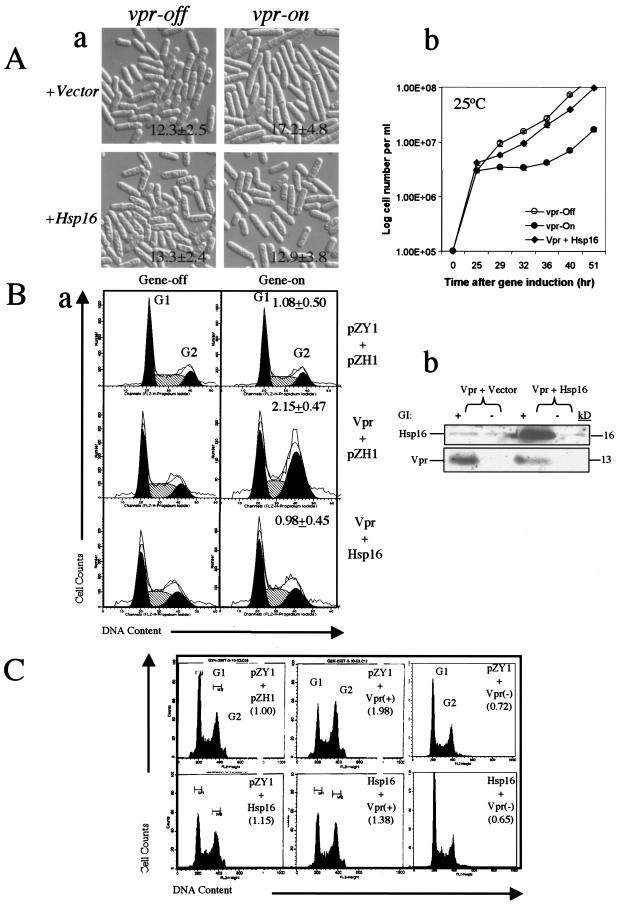FIG. 1.
Overexpression of hsp16 suppresses Vpr-induced cell cycle G2 arrest in fission yeast and human noninfected and HIV-infected cells. (A) Suppression of Vpr-induced G2 arrest by Hsp16 as measured in fission yeast by Vpr-induced cell elongation (a) and growth delay (b) in RE076 cells. Cell length was measured after 21 h of gene induction at 30°C. Growth kinetics was measured at 25°C. (B) Suppression of Vpr-induced G2 arrest by Hsp16 in human 293T cells. (a) The extent of Vpr-induced G2 arrest, measured by flow cytometric analysis, was quantified by the relative G2 to G1 ratio between gene-repressing and gene-expressing cells 72 h after gene induction. A relative G2/G1 ratio close to 1 indicates no significant difference between the gene-on and gene-off cultures. A relative ratio of >1 suggests increased G2 cells in the gene-on culture (66). (b) Western blotting shows specific expression of HIV-1 vpr and the fission yeast hsp16 gene in 293T-632 cells. GI, gene induction. (C) Suppression of Vpr-induced G2 arrest by Hsp16 in 293T cells infected with VSV-G pseudotyped HIV-1NL4-3. Vpr-positive or Vpr-negative HIV-1NL4-3 (57) was used to infect hsp16-expressing cells. Cell cycle profiles were measured by flow cytometric analysis 48 h after viral infection. Cells were infected with viruses adjusted to 3 × 106 cpm of RT activity per 106 cells.

